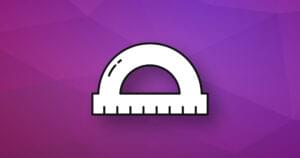Do you find yourself writing the same replies or covering the same topics day after day? You know the ones; chasing clients for material, responding to new business enquiries, chasing payments from recalcitrant clients, and possibly replies to employment queries from candidates.
Well, about five years ago, I tried a tried and true trick that direct marketers have been using since the dawn of postal services; I use templates.
That’s right – if you’ve ever had an email from me, about a topic that I repeatedly cover over and over, then there’s a chance that the email was derived from a template. Why, I hear you ask, would I ever use email templates? Isn’t that impersonal and ineffective? Quite the opposite! There are many great reasons to do this.
Save Yourself Precious Time
The less time you are writing emails, the more time you’re spending time doing what you really should be working on, unless your position title is ’email person’ of course! You’ll respond to enquiries faster. Because you are spending less time writing the same material over and over, you can respond faster to those urgent emails.
Save Your Recipient Time
If you make sure your email really answers the next queries too, it’ll save a bunch of time that your recipient would normally have to write back about.
It’s not Impersonal
I’m not suggesting writing an entire email and literally just changing the first line; there’s plenty of productivity and time-saving even in emails that are only 60% repeated content.
How to get started? Here’s what I do.
I start by watching what sort of emails I am constantly writing. I average over 120 emails a day, many of which expect a reply, and many of which are expecting a very similar reply. So I started by writing a list of the topics that I am regularly asked about.
Next step was writing the main points of the email, and just using that as a start. For example, a project update email may go along the lines of;
- Tasks just completed
- Tasks to be completed next
- Materials we need from the client
- Any deadline/budget issues
Then, I started writing emails that covered these points, and fleshed them out with all the details I believe the recipient needs. Over time, I then watched responses to those emails and found a number of recurring questions (such as responses to my email above regarding image supply ‘What format shall I send those images?’) and I made sure my email covered those too, saving both myself and the recipient time in reading an responding.
I keep these templates in a folder in my mail program, with a subject line what the general topic is, so I have emails with the subject ‘Follow up about recent quotation’ and the like.
Then, I cut and paste the text from these email templates into my replies, or new emails in some cases, and then personalize and rewrite parts that need revision. That way, the email really is tailored to the recipient and doesn’t sound ‘canned’.
Give this method a try – I’m positive you’ll find all sorts of emails you can pre-write and give yourself extra time for more important work, every day. Enjoy that extra time!
Email image via Shutterstock
As Director of Bam Creative, and Chairperson of the Australian Web Industry Association, Miles spends his time managing his business or speaking about managing businesses. Recently awarded as one of the top Western Australian entrepreneurs under 40 years old, Miles can also be found writing at his blog.

